In Rajasthan’s Shekhawati area, the Nawalgarh Fort is a magnificent example of Rajput architecture. Thakur Nawal Singh built this fort in the eighteenth century, and it is well-known for its elaborate murals, finely painted walls, and exquisite havelis inside the complex. Often referred to as an “open-air gallery,” the historical city of Nawalgarh and its fort are a must-see for those who enjoy art and history. You can get a sense of the majestic way of life and magnificent architecture of the past at the fort.
Location
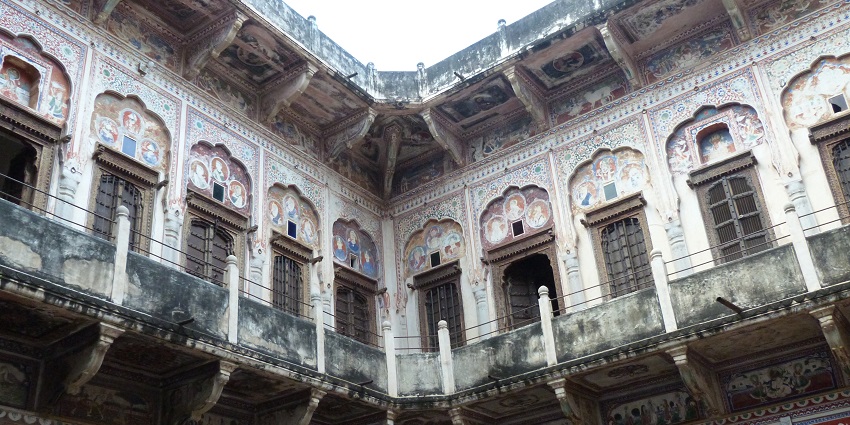
Photo: Thérèse Gaigé / Wikimedia Commons
Nawalgarh Fort is situated in the town of Nawalgarh in the Jhunjhunu district of Rajasthan. It is approximately 140 km from Jaipur, making it accessible for a day trip from the state capital. For those travelling from Delhi, the distance is around 265 km. The fort is also relatively close to Mandawa, about 30 km away. To reach Nawalgarh Fort, you can travel by air to Jaipur and then drive, take a train to Nawalgarh, or drive directly to the fort. The region is well-connected by road, offering a scenic drive through the historic Shekhawati region.
Suggested Read: Places To Visit In Jhunjhunu
How To Reach Nawalgarh Fort
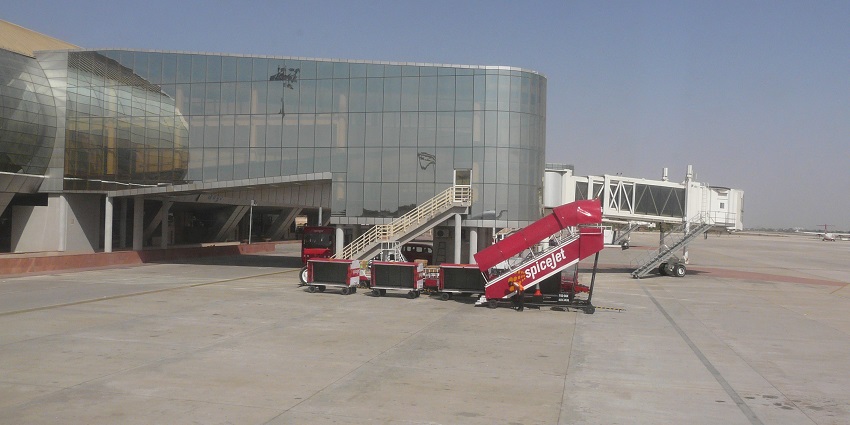
Photo: Ashwin Kumar / Wikimedia Commons
By Air: The nearest airport is Jaipur International Airport, around 150 km away. From Jaipur, you can take a taxi or bus to reach Nawalgarh.
By Train: Nawalgarh has its own railway station, well-connected to Jaipur, Delhi, and other cities. Trains to Nawalgarh are frequent.
By Road: Nawalgarh is well-connected by road. You can take state buses or hire private taxis from Jaipur or Delhi. The roads are well-maintained, offering a scenic drive through Rajasthan.
Places To Visit Near Nawalgarh Fort
Visitors to Nawalgarh pay a visit to these wonderful tourist attractions near the fort. These places add historical and cultural value to the entire trip.
1. Dundlod Fort
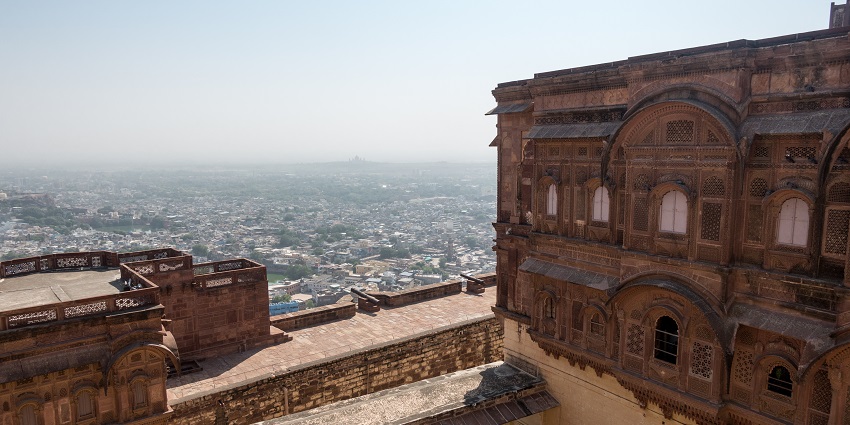
Photo: ReadyElements / PxHere / Image For Representation Only
Located in the Shekhawati region, Dundlod Fort is a significant heritage site that goes back to the 18th century. Constructed by Thakur Nawal Singh, the fort is a magnificent illustration of Rajput architecture, showcasing a harmonious combination of elaborate carvings and graceful frescoes. The grandeur of the Rajput era is reflected in the fort’s expansive courtyards and regal interiors. It also has a museum with pieces of art and historical relics.
Distance From Nawalgarh Fort: About 7 km
Timings: 9 AM – 6 PM
Entry Fee: Free
Suggested Read: A Journey Through Rajasthan Forts
2. Havelis Of Mandawa
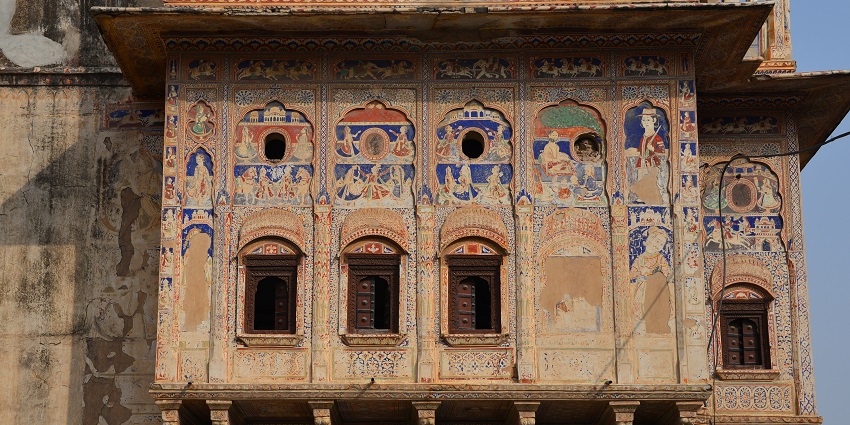
Photo: Clément Bardot / Wikimedia Commons
Mandawa is famous for its spectacular havelis decorated with superb frescoes and vivid murals. These havelis, built by rich merchants in the 18th and 19th centuries, combine traditional Rajput and Mughal forms. Examples include the Jhunjhunwala Haveli and the Gulab Rai Ladia Haveli. The intricate artwork on the walls covers images from mythology, everyday life, and historical events. Exploring these havelis offers a distinct perspective on the Shekhawati region’s artistic legacy and affluence.
Distance From Nawalgarh Fort: Around 30 km
Timings: 8 AM – 6 PM
Entry Fee: Varies by haveli
3. Fatehpur Havelis
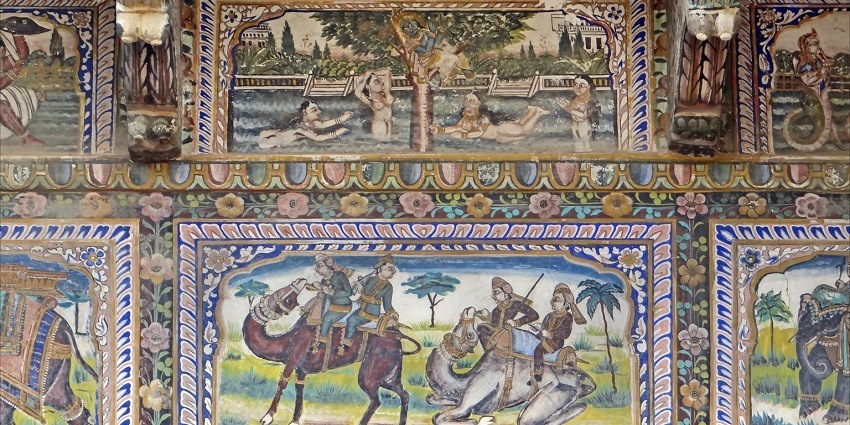
Photo: dalbera / Wikimedia Commons
Fatehpur, another jewel of Shekhawati, is known for its ornate havelis, such as the Jagannath Singhania Haveli. These havelis are notable for their intricate frescoes representing historical events, deities, and everyday life in brilliant hues. The murals frequently combine traditional Rajput motifs with European influences, reflecting the cosmopolitanism of the region’s affluent merchants. A visit to Fatehpur’s havelis is like entering an open-air exhibition that showcases Rajasthan’s artistic magnificence.
Distance From Nawalgarh Fort: About 50 km
Timings: 9 AM – 5 PM
Entry Fee: Free
Suggested Read: Places To Visit In Rajasthan
4. Rani Sati Temple
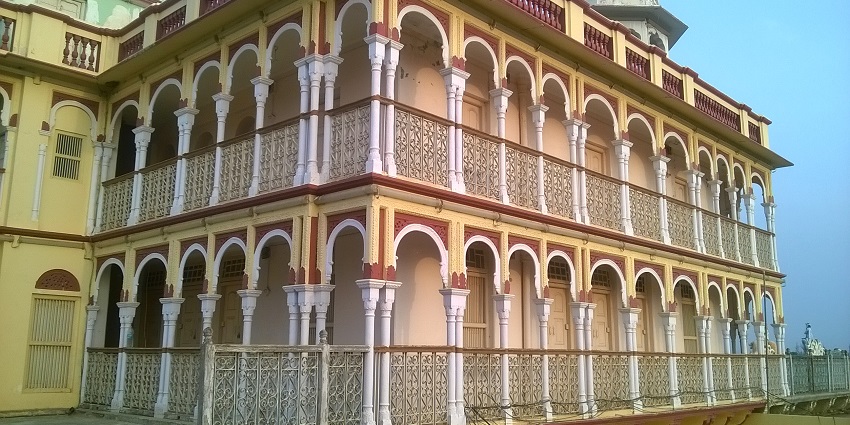
Photo: Sandeep157 / WIkimedia Commons
The Rani Sati Temple in Jhunjhunu is a major Hindu pilgrimage destination devoted to Rani Sati, a legendary character in Rajasthan. The temple has beautiful architecture, with exquisite carvings and vibrant frescoes. It is renowned for its majestic entryway and exquisitely decorated interiors. The temple is popular among both devotees and tourists because of its religious significance and architectural splendour. The website provides an in-depth look at local traditions and religious activities.
Distance From Nawalgarh Fort: Approximately 40 km
Timings: 6 AM – 8 PM
Entry Fee: Free
5. Khetri Mahal
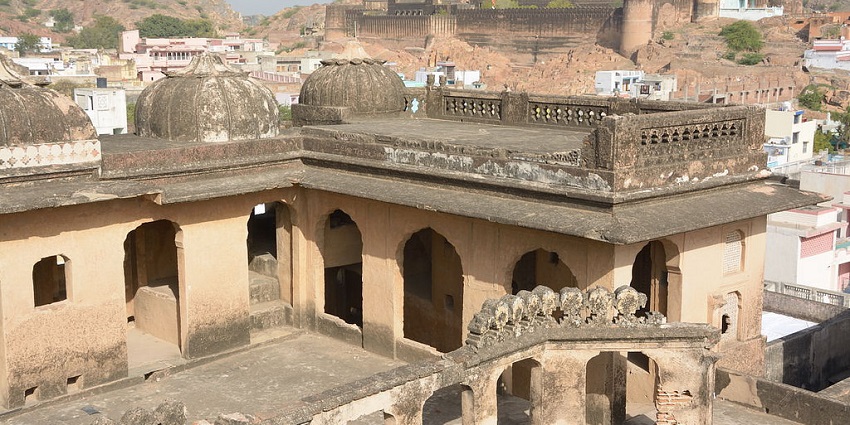
Photo: AKS2000 / WIkimedia Commons
The Khetri Mahal, also known as the Wind Palace, is a magnificent palace erected in the 18th century by the Khetri dynasty. Its building combines Mughal and Rajput traditions, with open courtyards and elaborate paintings. The palace’s style and significance in history make it a popular attraction in Jhunjhunu, giving insight into the region’s royal history.
Distance From Nawalgarh Fort: Approximately 40 km
Timings: 9 AM – 5 PM
Entry Fee: Free
Suggested Read: Offbeat Places In Rajasthan
Where To Stay
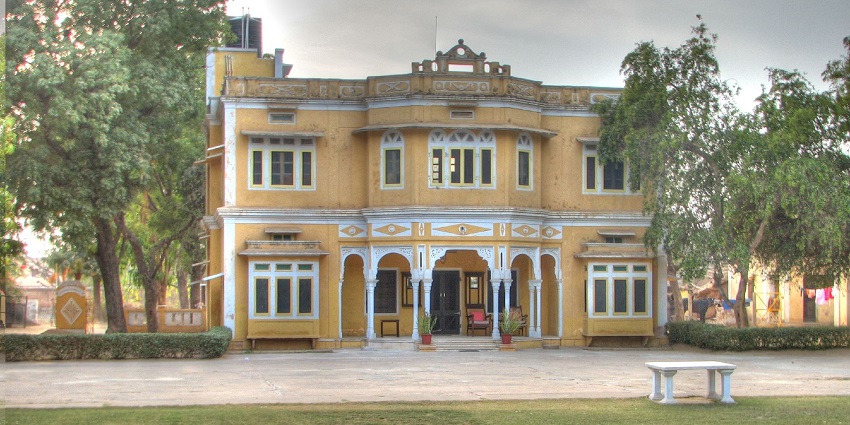
Photo: michael clarke stuff / WIkimedia Commons
Nawalgarh has a variety of accommodations, including heritage hotels, guest houses, and low-cost lodges. For a one-of-a-kind experience, consider staying at a heritage hotel such as Roop Niwas Kothi, which combines royal elegance with modern facilities. Hotels located close to Nawalgarh are noted because of their friendly hospitality and traditional Rajasthani cuisine. Staying in a haveli or rebuilt fort is an excellent opportunity to learn about the region’s history and culture.
Where To Eat
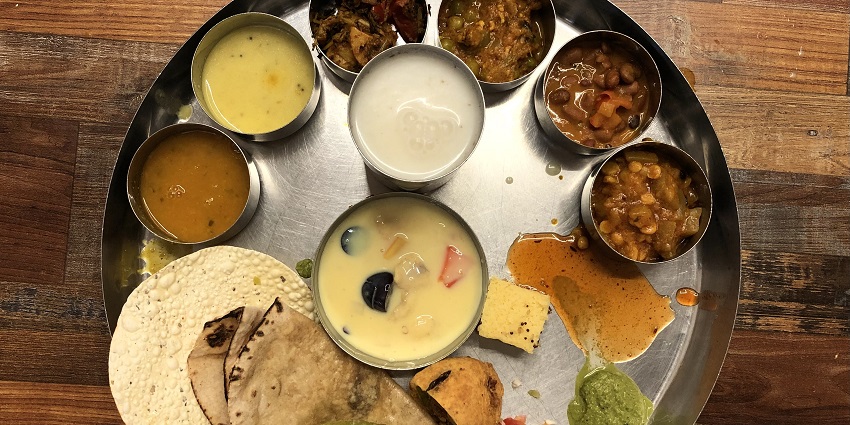
Photo: Picofolkujur / Wikimedia Commons
While at Nawalgarh, try the traditional Rajasthani cuisine. Many nearby dining establishments provide traditional thalis featuring meals such as Dal Baati Churma, Gatte ki sabzi, and kadhi. For an extra formal dining experience, visit Shekhawati Restaurant, which serves a combination of Rajasthani and North Indian food. Street food lovers are able to visit local markets for snacks such as kachoris and samosas. Many heritage hotels provide exquisite regional and continental meals.
Suggested Read: The Best Foods In Rajasthan
Best Time To Visit
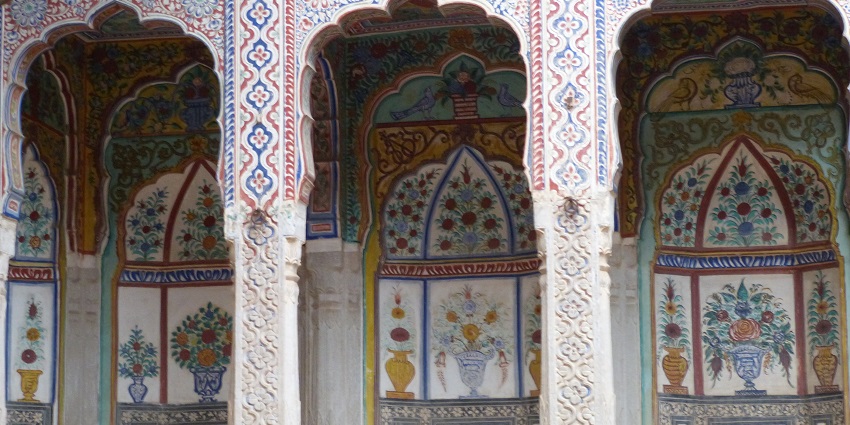
Photo: Thérèse Gaigé / Wikimedia Commons
The months of October through March are the coolest times of year to visit Nawalgarh Fort. This is the perfect time of year to explore the Havelis, the fort, and other surrounding sights because of the lovely weather. Rajasthan experiences scorching summers (April to June), interspersed with sporadic downpours during the monsoon season. You can also take advantage of the wintertime festivals and fairs, which provide a greater attraction to the area, by visiting during this time.
Other Factors To Consider
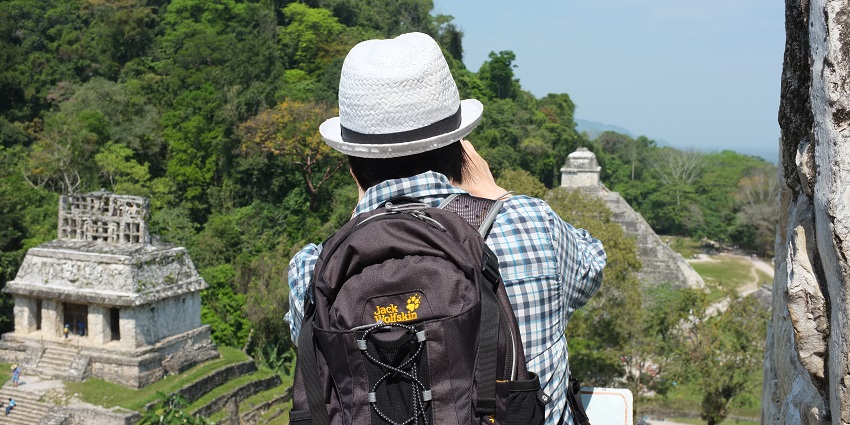
Photo: Oliver Wagner / Wikimedia Commons / Image For Representation Only
Timings: Nawalgarh Fort timings are 9 AM to 6 PM.
Dress Modestly: When visiting havelis and temples nearby, it is advisable to wear modest clothing.
Local Guides: Hiring a local guide can enhance your experience as they offer insights into the history and architecture.
Carry Cash: Some smaller attractions may not accept digital payments, so it’s good to carry cash.
Suggested Read: Places To Visit Near Rajasthan For A Memorable Vacation Experience
Nawalgarh Fort and its surroundings are a magnificent tapestry of Rajasthan’s legacy, combining history, culture, and artistry. From the grandeur of adjacent forts like Dundlod and Mandawa to the frescoed havelis of Fatehpur and Churu, each visit offers an opportunity to learn more about the dynamic Shekhawati region. These locations offer a wonderful experience of traditional handicrafts, royal legacies, and calm landscapes. Book your trip to Rajasthan with TripXL to enjoy the majestic Nawalgarh fort.
Cover Photo: Doris Antony / Wikimedia Commons


 WhatsApp
WhatsApp
 Twitter
Twitter









